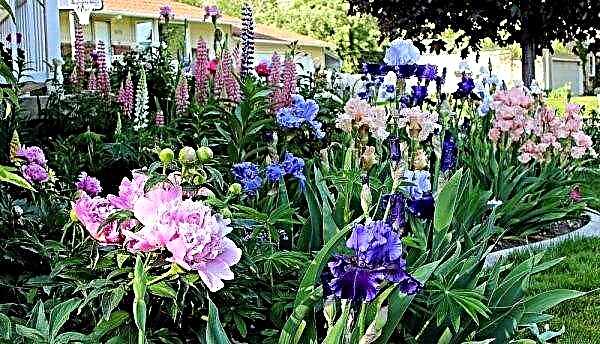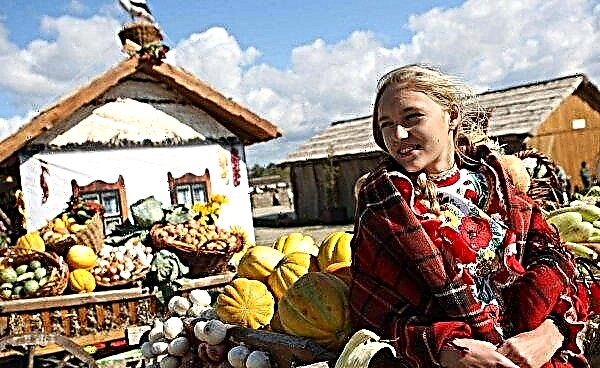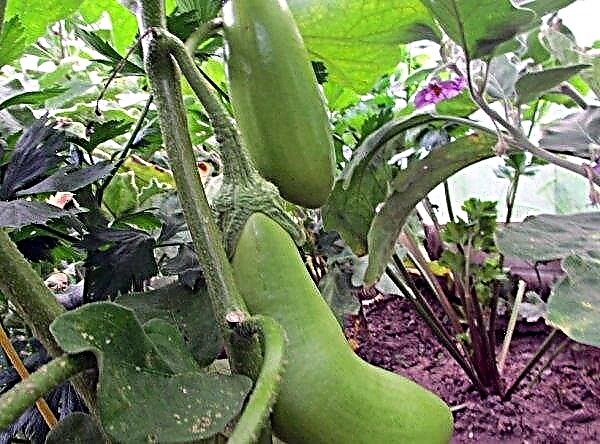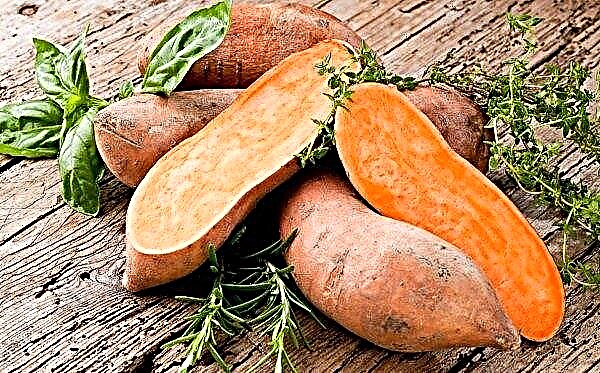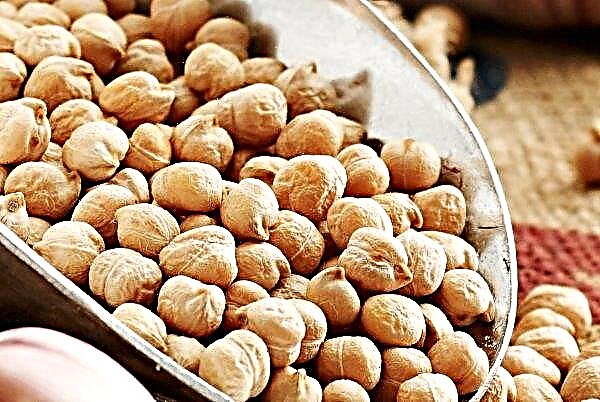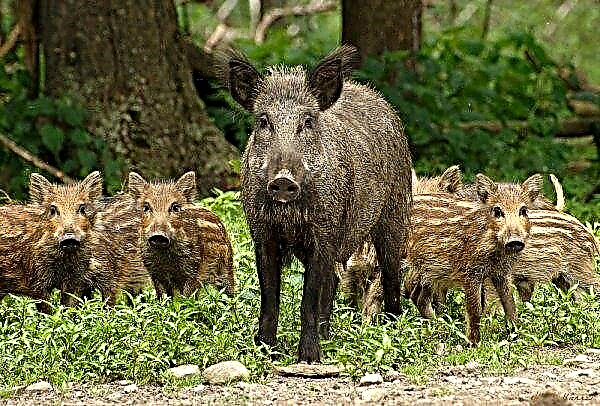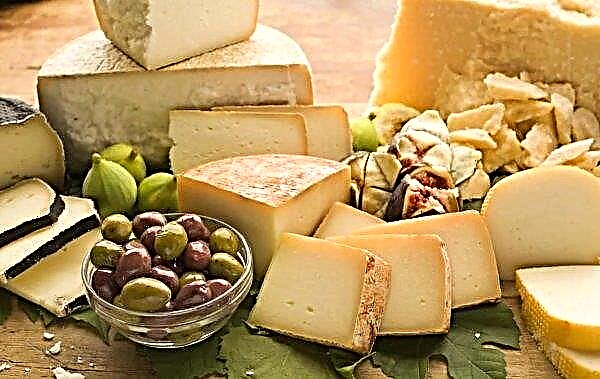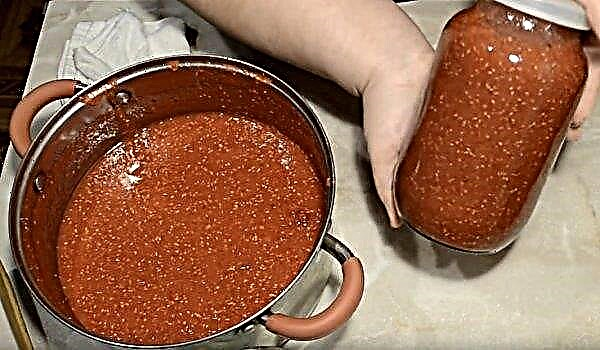Tomato is rightfully considered the most popular crop grown by gardeners. A great variety of varieties allows you to choose the most suitable for specific conditions. Of greatest interest are the so-called indeterminate species. One of these is Chukhloma tomato, and its features will be discussed.
Grade description
Chukhloma is a representative of tall indeterminate varieties (the growth of the main stem is unlimited) and is characterized by the following features:
- mid-season, ripening of the first fruits occurs in 110–115 days;
- tall, the bush can grow up to 2 m in height;
- high yield - one bush is able to yield up to 5.5 kg of tomatoes. The mass of one tomato is 100-120 g;
- unusual appearance of the fetus: fruits of elongated oblong shape, about 12 cm long, bright orange in color, hold tightly on the hand. The peel of the fruit is dense, the flesh is fleshy and juicy.
Did you know? The fruit of wild tomato in nature reaches a weight of not more than 1 g, while cultivars can produce tomatoes weighing up to 1 kg.
Advantages and disadvantages
- The positive qualities of the variety are:
- pest resistance and immunity to common diseases;
- high productivity;
- adaptability to various climatic conditions;
- high quality fruits, ensuring successful transportation and long-term storage.
The disadvantage is considered to be the unlimited growth of the main stem, because of which there is a danger of damage to the bushes.
Self-growing seedlings
Chukhloma is ideal for cultivation on a summer cottage in almost any locality, grown by breeding seedlings.
Optimum timing for sowing
In order to ensure good germination of seedlings, it is important to strictly observe the recommended time for sowing seeds for seedlings. Usually it is produced no later than 40 days before the intended landing in the ground, that is, usually in mid-March.
Did you know? In Europe, for a long time, tomatoes were considered inedible, and even poisonous, like other solanaceous, so they were grown in gardens like ornamental shrubs.
The soil
The soil for future seedlings should be fertile, including turf, peat and humus soil in its composition. To disinfect, it is necessary to pour the prepared soil mixture with a solution of potassium permanganate.
Capacity for growing
For successful cultivation of tomato seedlings, it is necessary to choose a container suitable for these purposes, taking into account the characteristics of the plant.
Important! Peat tablets are convenient for seed germination, but for the full development of the seedling there is too little soil in them, so it is recommended that after the first 2 leaves appear seedlings are transplanted into a larger container.
For Chukhloma tomatoes, it is most convenient to use the following types of containers:
- Seedling boxes - this is the most common type of container, most often they use plastic or wooden products, 8-10 cm high. Such containers are convenient to install on the windowsill and easily move to another place.
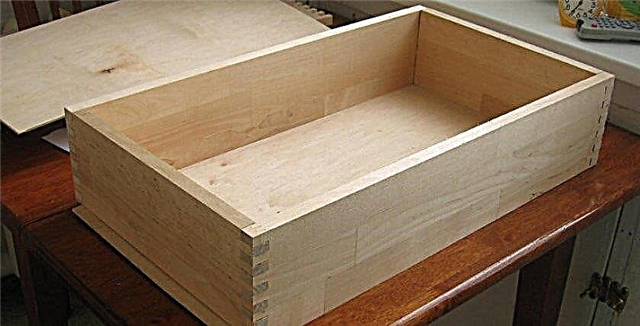
- Trays or cassettes - These are plastic bathtubs having inside partitions dividing the container into segments. They differ from the box in that they exclude the weaving of the root system of seedlings growing nearby.
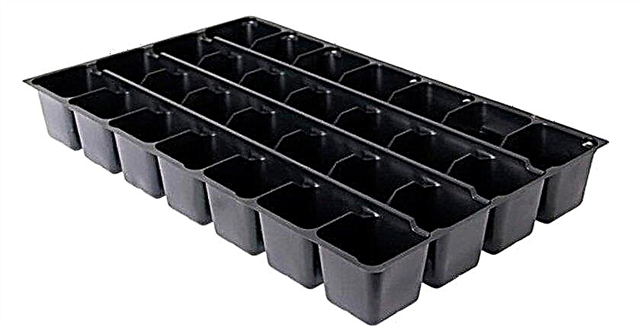
- Seedling Pots They are an ordinary small flower pot with drainage holes in the bottom. Made of thin flexible plastic, suitable for growing seedlings of any crops.

- Plastic Disposable Cups used in gardening very often, as a cheaper alternative to special pots. For breeding seedlings in the bottom of the tank, make holes with a sharp object, and then install on a pallet.

- Peat pots 70% of peat and 30% of paper are made, the substrate is placed in them and seeds of future tomatoes are planted, plants can be planted in the ground without removing them from the pot, the peat-paper mixture quickly decomposes in the soil.
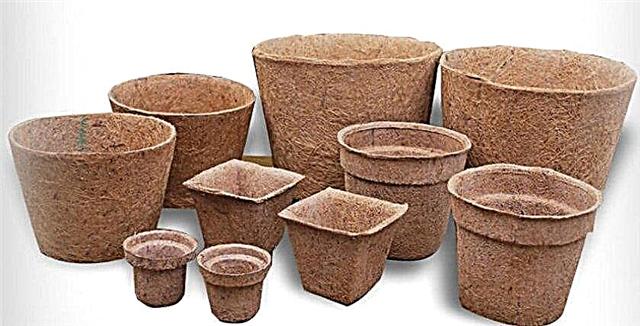
- Peat pills they are essentially a compressed peat mass wrapped in a special fabric. Seeds are placed directly in the center of the product and after that it is enough just to regularly moisten the tablet with water. As in the previous paragraph, it is assumed that the seedlings are planted in the ground along with the tablet.
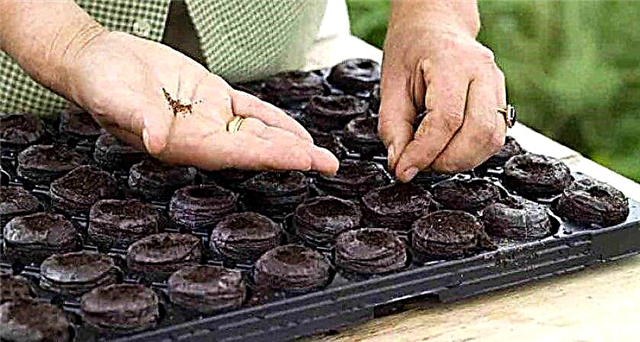
Seed preparation
To ensure germination of seeds, it is necessary to prepare them:
- disinfect the seeds by soaking them for 20 minutes in a 1% solution of potassium permanganate, then rinse with water;
- soak them for two days in a growth stimulator;
- put on a clean plate or tray and cover with a damp cloth until the root sprouts.
Sowing seeds
Tomato seeds should be planted in seedlings containers taking into account the peculiarities of the development of the root system: the soil mixture must be moist, grooves of about 1 cm deep are made in it, 4 cm apart from each other. The seeds are sown at a distance of 2 cm from each other.
Seedling Care
As soon as the first sprouts appear, Chukhloma seedlings are transferred to the most illuminated area of the room. Experienced gardeners recommend, during the first few days after the sprouts, to provide constant illumination to plants. The air temperature at the location of the seedlings should be stable and be +23 ... + 24 ° C, in addition, plants should be protected from drafts. It is necessary to irrigate seedlings regularly, maintaining a constant soil moisture, preventing its drying out. To maintain the desired microclimate, you can cover the container with glass or film. After the appearance of the first two leaves, seedlings are dived. That is, each bush is transplanted into an individual container.
It is necessary to irrigate seedlings regularly, maintaining a constant soil moisture, preventing its drying out. To maintain the desired microclimate, you can cover the container with glass or film. After the appearance of the first two leaves, seedlings are dived. That is, each bush is transplanted into an individual container.
An important stage in the cultivation of tomato seedlings is top dressing, it is it that ensures successful growth and high productivity. For seedlings, nitrogen fertilizers are used. The first time you need to fertilize young seedlings when the first leaflet appears; the second - 14 days after the dive, and the third 10 days before transplanting seedlings into open ground.
Important! You can not leave boxes with seedlings in the open air at night, this can lead to a slowdown and even stunting.
Seedling hardening
So that transplanting into open soil does not become stressful for tomato seedlings, you need to take care of hardening seedlings in advance. For this, a couple of weeks before landing, tanks with young animals are gradually being taken out into the open air. It’s worth starting with 15–20 minutes, gradually increasing the time.
Planting seedlings in a permanent place
1.5 months after the emergence of seedlings, seedlings can be transferred to garden soil. To do this, you need to prepare in advance, loosen the soil, form furrows that will ensure the preservation of moisture. Furrows are made at a distance of 80 cm from each other, the seedlings themselves are planted in increments of half a meter.
Care
Planted in a permanent place seedlings, requires careful care, only in this case we can expect a large crop of tomatoes.
Watering
Proper organization of watering tomato Chukhloma will ensure the proper growth and development of the plant. The peculiarity of this variety is that lack of water can lead to the formation of small fruits. The regularity of tomato irrigation is adjusted depending on the climate and the region of cultivation, usually oriented to the drying out of the top soil layer.
In the middle of the season, when the weather is hot, the bushes are abundantly watered every 2 days. Watering is carried out under the root. It is important to remember that during the first week after the seedlings are moved to the soil, they do not need to be watered, they will have enough moisture received during the transplant.
Top dressing
Like any indeterminate variety, Chukhloma tolerates top dressing well. Nevertheless, it is important to observe the measure, since an excess of fertilizers can harm the plant.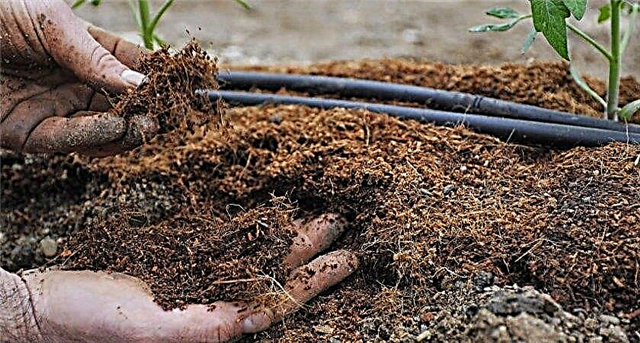 Feed three times a season:
Feed three times a season:
- 10 days after transplantation, a prepared solution of mineral fertilizers is usually used during irrigation;
- during the formation of the first ovaries produce a second top dressing, while preparing a mixture of 1 bucket of infusion of organics and 1 tbsp. l finished mineral solution. Under the root of each bush, pour 2 liters of fertilizer;
- similar to the previous composition, only in larger quantities (2.5–3 liters per bush), contribute during the ripening period of the first fruits.
Stepson
Chukhloma is a tall plant, the height of the main stem can reach 2.5 m, so the correct formation of the bush will avoid overloading the plant. In order for the tomato bush to develop correctly and the nutrients are not wasted, you need to regularly conduct stepsoning - removing the emerging side shoots. Since this variety is characterized by heavy brushes of tomatoes, the bush is formed, as a rule, in one stem.
Typically, the procedure is performed every 7-10 days, in dry weather, cutting off or pinching fingers of unnecessary stepsons. Under certain conditions, shoots can form faster, in which case they are removed more often, not allowing them to grow to 5 cm.
Soil care
The yield of tomatoes directly depends on the condition of the soil, so you need to provide regular care for the site on which they grow:
- regular weed weeding is a mandatory step in the care of tomatoes, since all weeds intensively consume useful substances from the soil, which can weaken the cultivated crop;
- it's no secret that tomatoes love moist soilTo save the required amount of water in the root system, experienced gardeners advise mulching the soil around the bushes. For these purposes, sawdust, straw, grass, dry leaves and even plucked weeds are most often used. The soil around the bush is covered with mulch, which allows you to create the right microclimate for the root;
- loosening of land on beds of tomato contributes to the conservation and redistribution of moisture, and also saturates the soil with oxygen, which is very useful for the plant. The first loosening is carried out already when the seedlings are planted in a permanent place, and then repeated with an interval of 2 weeks;
- for the development of the subordinate root system formed in the lower part of the bush, plant should be regularly spud. The first time the procedure is carried out no earlier than 20 days after planting in open ground, and then repeated every 14 days, combining it with loosening the soil.
Bush tying
Since the Chukhloma bushes grow very tall and with heavy clusters, it is important to take care of their safety in advance. The grown bushes must be tied up so that the stem does not break under the weight of the fruit. For these purposes, the so-called trellises are built: vertical posts installed along the entire furrow.
On top are laid horizontal slats to which the bushes are tied. The height of the trellis should be at least 2.5 m. Sometimes other methods are also used for tying: a vertical plastic net, a separate picket fence, a wire stretched in rows.
Preventative treatment
Chukhloma, despite a fairly strong immunity, is still susceptible to defeat by some diseases and pests. To avoid infection and crop loss, preventive measures should be taken:
- timely clean soil from weeds;
- regularly loosen the earth;
- Do not plant seedlings next to or after other solanaceous plants;
- if the tomato is grown in a greenhouse, it is necessary to ventilate it regularly;
- in case of a disease of one of the shrubs, it is necessary to take urgent measures to treat all other plants, resorting to special industrial means intended for these purposes.
Harvesting
Tomatoes begin to be harvested as soon as the fruits reach the sizes characteristic of a ripened representative of this variety. As a rule, they do not wait for full ripening, but they remove the browned tomatoes, which are then left to ripen. It is recommended to remove tomatoes from the bush in warm and dry weather early in the morning, this will save maximum juiciness and freshness of the fruit. Picked tomatoes are sorted, sorted by size and put in dry clean boxes, with a layer not exceeding 20 cm. Ripening of fruits should occur at a temperature of +18 ... + 24 ° C in a well-ventilated room with a humidity level of at least 80%. Often ripened fresh tomato bushes are used for ripening, they are placed on shelves or in boxes and a layer of tomatoes is laid on them. With this method, the fruits retain their freshness and presentation better.
Ripening of fruits should occur at a temperature of +18 ... + 24 ° C in a well-ventilated room with a humidity level of at least 80%. Often ripened fresh tomato bushes are used for ripening, they are placed on shelves or in boxes and a layer of tomatoes is laid on them. With this method, the fruits retain their freshness and presentation better.
So, having considered the features of a tomato variety with the unusual name Chukhloma, you can confidently call it one of the most suitable for growing in a garden or in a greenhouse. Subject to agricultural technology, this species will provide a high yield of tomatoes with excellent characteristics.









